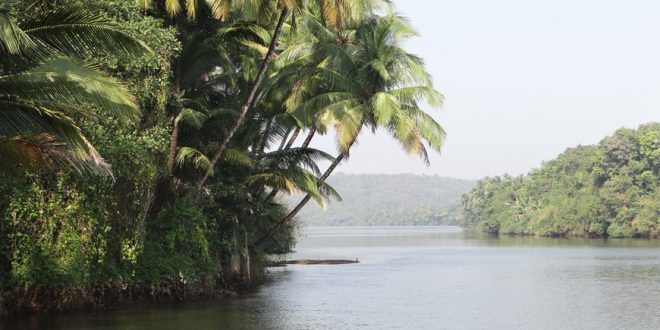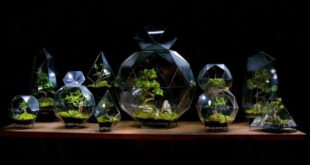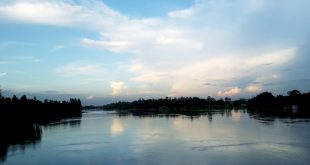Definition
An ecosystem is a structural and functional unit of the nature where there functional unit of the nature is interactions between living organisms and nonliving components and that living components determine the flow of energy and nutrients.e.g. pond ecosystem, forest ecosystem etc.
Ecosystem performs 2 major functions : flow of energy and nutrients. During this process there occur primary production (biomass) and recycling of nutrients (biogeochemical cycling)nutrients.
Major components of an Ecosystem
Abiotic (nonliving) components :
- The atmosphere (air, rainfall, snowfall, temperature).
- The hydrosphere (water).
- The lithosphere (earth crust).
Abiotic components are the reservoirs of the nutrients like C, O, H, N, P and S that are uptaken by plants.
Biotic (living) component :
- Producers - organisms capable of photosynthesis (e.g. 10green plants).
- Consumers – herbivores (e.g. cattle) and carnivores (e.g. tiger etc.).
- Decomposers – microorganism (bacteria, fungi etc.).
Biome
A BIOME is the largest geographic biotic unit, a major community of plants and animals with similar life forms and environmental conditions.
How are biomes formed?
Biomes are distributed across the Earth based primarily on climate. Therefore, in areas that are far apart, you will sometimes find similar plants and animals because the climate is similar.
One factor affecting climate is latitude. Typically, the farther you move north or south of the equator, the colder the temperature gets.
Another factor affecting climate is elevation. The higher you go in elevation, the colder the temperature gets.
Biomes usually found at cold latitudes far from the equator are sometimes also found on high mountains at low latitudes. Typically, a climb of 100 feet in elevation is equivalent to traveling 600 miles northward.
Flow of energy and nutrients in ecosystem
Green plants trap solar energy from the sun and convert it into chemical energy. This energy is transferred from one trophic level to another. At each transfer level 80 – 90% of energy is lost into the space. Plants absorb nutrients from the soil and use it for the production of biomass.
During decomposition these nutrients are released back into the environment. Plalnts again uptake these nutrients to buildup their body.
Energy flow is unidirectional/noncyclic and nutrient flow is cyclic.
The Food Chain
A food chain shows how energy is transferred from the producer to the consumer by eating or being eaten by the next trophic level. Each trophic level in this chain is food for the next trophic level.
When herbivore is eaten by a carnivore, only a small amount of energy (10 - 20%) is transferred to the carnivore. The carnivore therefore has to eat many herbivores to get enough energy to grow.
Number of trophic level is limited upto 4 or 5.
- Green plants = Primary producer = 1st trophic level.
- Herbivore = Primary consumer = 2nd trophic level.
- Carnivore = Secondary consumer = 3rd trophic level.
- Carnivore = Tertiary consumer = 4th trophic level.
Types of food chains in Ecosystem
Food chains are of 2 types:
- Grazing food chain : Food chain that starts from the living green plants and goes to grazing herbivores, and on to carnivores, is known as grazing food chain. Ecosystems with such type of food chain are directly dependent on an influx of solar radiation. Most of the ecosystems in nature follow this type of food chain. e.g. grasses →rabbit → Fox.
- Detritus food chain : Food chain that goes from dead organic matter into micro-organisms and then to organisms feeding on detritus (detrivores) and their predators is known as detritus food chain. This chain is less dependent on direct solar energy.
 Plantlet The Blogging Platform of Department of Botany, University of Dhaka
Plantlet The Blogging Platform of Department of Botany, University of Dhaka





